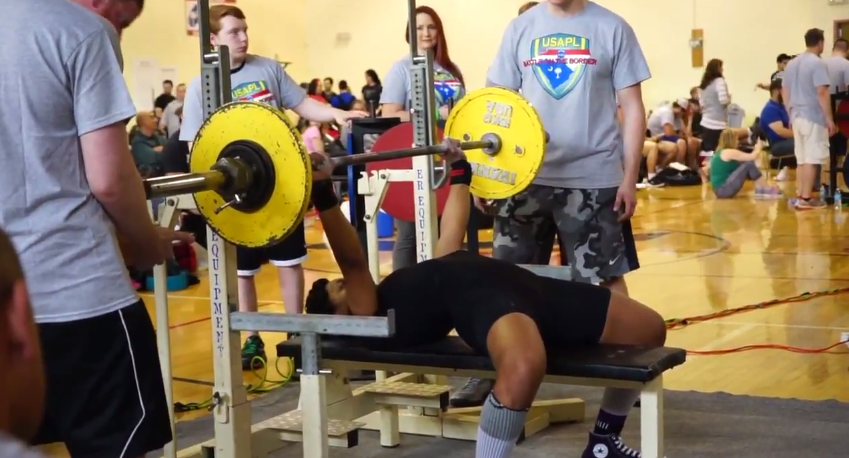Powerlifting 101
The Bench Press

The bench press is the second lift performed in powerlifting meets.
As the only upper-body lift, it tends to be a most or least favorite for strength athletes.
Increasing bench numbers requires patience and experimentation in both training and technique.
The Setup
The two main factors in the bench setup are the grip position and the back arch.
Powerlifters typically adopt a wide grip and dramatic arch in order to shorten the range of motion of the press. The degree of each of these in training and competition will be highly dependent on the health of the shoulders, training goals, and experience.
A good starting point would be to place the hands 1-4 inches out from the smooth center part of the bar (as demonstrated in the video). The forearms should be kept vertical at all times and wrist held as straight as possible.
The back arch requires practice and thoracic spine mobility. Pulling the shoulders back and down while keeping the glutes engaged will produce a natural, safe arch.
Commands & Judging

The bench press is the most involved lift when it comes to commands.
Once your name is called, you have time to setup and request a lift-off.
After setting your position and getting the bar to a motionless lockout over the chest, the first command is given.
"START!"
Take a breath and bring the bar down to the chest.
Make contact, steady the bar, and pause motionless
"PRESS!"
Drive the bar up as hard and fast as possible. Exhale through the sticking point and grip the bar tight!
Lockout the arms and remain motionless.
"RACK!"
Return the bar to the rack. Spotters will help with this.
The most common fault in the bench is missing commands. This is also the most missed lift simply due to fatigue or poor attempt selection.
Setting The Grip
The Powerlifting Bench Press in Action:
Start @ 2:07
The Pause
Training the press with paused contact on the chest causes the most issues with lifters who haven't practiced this technique.
The pause can fundamentally change how a weight feels and influences all other points of technique.
For these reasons, it is generally advisable to perform all reps to full range of motion with at least a 1/2 second pause.
This comes down to patience and persistence. Start easy.